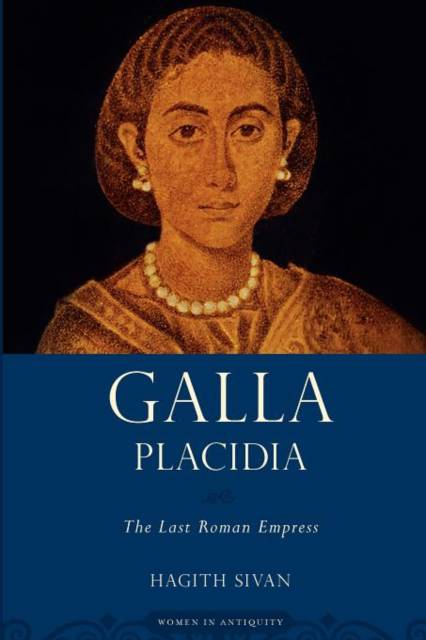
En raison d'une grêve chez bpost, votre commande pourrait être retardée. Vous avez besoin d’un livre rapidement ? Nos magasins vous accueillent à bras ouverts !
- Retrait gratuit dans votre magasin Club
- 7.000.000 titres dans notre catalogue
- Payer en toute sécurité
- Toujours un magasin près de chez vous
En raison de la grêve chez bpost, votre commande pourrait être retardée. Vous avez besoin d’un livre rapidement ? Nos magasins vous accueillent à bras ouverts !
- Retrait gratuit dans votre magasin Club
- 7.000.0000 titres dans notre catalogue
- Payer en toute sécurité
- Toujours un magasin près de chez vous
78,95 €
+ 157 points
Format
Description
The astonishing career of Galla Placidia (c. 390-450) provides valuable reflections on the state of the Roman empire in the fifth century CE. In an age when emperors, like Galla's two brothers, Arcadius (395-408) and Honorius (395-423), and nephew, Theodosius II (408-450), hardly ever ventured beyond the fortified enclosure of their palaces, Galla spent years wandering across Italy, Gaul and Spain first as hostage in the camp of Alaric the Goth, and then as wife of Alaric's successor. In exile at the court of her nephew in Constantinople Galla observed how princesses wield power while vaunting piety. Restored to Italy on the swords of the eastern Roman army, Galla watched the coronation of her son, age six, as the emperor of the western Roman provinces. For a dozen years (425-437) she acted as regent, treading uneasily between rival senatorial factions, ambitious church prelates, and charismatic military leaders. This new biography of Galla is organized according to her changing roles as bride, widow, bereaved mother, queen and empress. It examines her relations with men in power, her achievements as a politician, her skills at establishing power bases and political alliances, and her efficiency at accomplishing her desired goals. Using all the available sources, documents, epigraphy, coinage and the visual arts, and Galla's own letters, Hagith Sivan reconstructs the turning points and highlights of Galla's odd progression from a bloodthirsty princess at Rome to a bride of a barbarian in Gaul, from a manipulative sister and wife of emperors at the imperial court at Ravenna to a beggar at the court of her relatives in Constantinople, and from a devious regent of the western Roman empire to a collaborator of popes in Rome.
Spécifications
Parties prenantes
- Auteur(s) :
- Editeur:
Contenu
- Nombre de pages :
- 240
- Langue:
- Anglais
- Collection :
Caractéristiques
- EAN:
- 9780195379136
- Date de parution :
- 31-08-11
- Format:
- Livre broché
- Format numérique:
- Trade paperback (VS)
- Dimensions :
- 152 mm x 231 mm
- Poids :
- 299 g

Les avis
Nous publions uniquement les avis qui respectent les conditions requises. Consultez nos conditions pour les avis.






